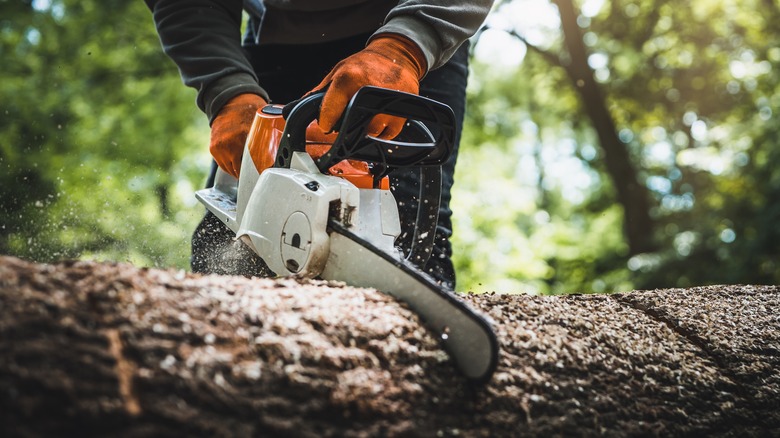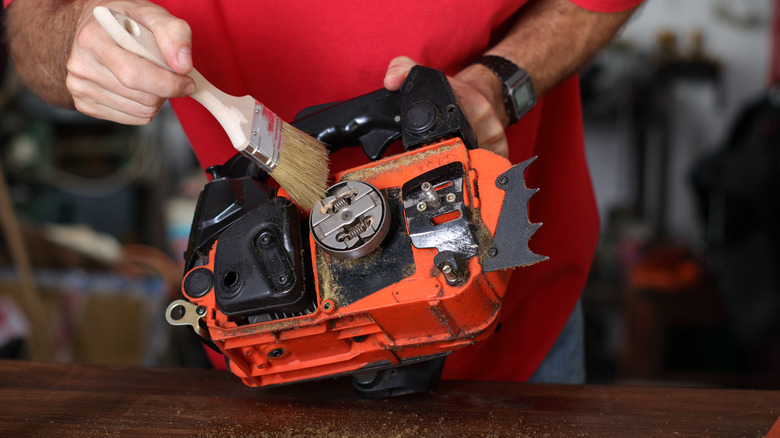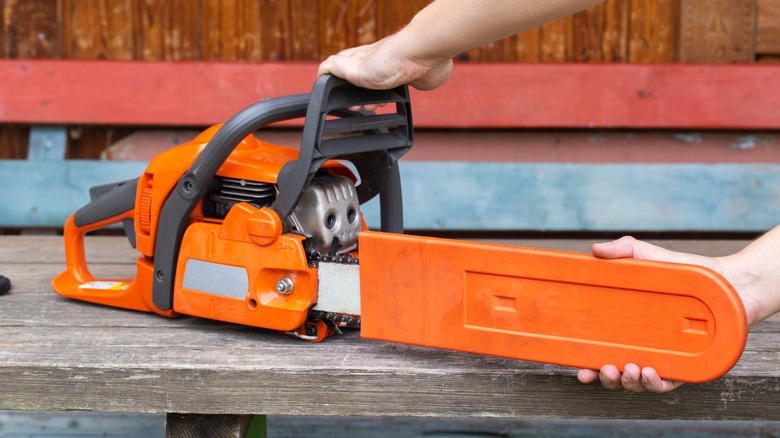Tips & Tricks For Securely Storing Chainsaws
One of the most versatile tools in your collection is undoubtedly the chainsaw. A sharp chain can help you slice through thick wood or ice with ease, making labor-intensive projects more manageable. Those in the tree trimming, logging, and construction trades use chainsaws most often, while homeowners may only use them a few times a year. One of the most important aspects of owning this robust cutting tool is ensuring it is maintained properly. An often-overlooked tenet for preserving a chainsaw is good storage.
Why is good storage necessary? Can't you just set the chainsaw on the floor in the garage and call it good? No, you shouldn't use your chainsaw and then immediately set it aside for several days or months without completing some crucial steps first. For many reasons, proper storage is essential for most tools, particularly a chainsaw. An improperly stored and neglected chainsaw can affect performance, cause a breakdown of components, create a safety issue, and lead to expensive repairs or replacement. If you're in the market for a powerful cutting machine, a chainsaw buyer's guide can help you find top brands and affordable picks.
Clean it and drain it
While it might be tempting to set the tool aside following a big project, you should consider cleaning and draining the fuel first(gasoline-powered version), especially if you don't plan on using it for a while. The chain can easily become plugged with debris, and a dirty chain dulls quickly. For your next project, you don't want to start cutting with a dull chain as the threat of kickback becomes more likely. According to the CDC, around 36,000 people are hospitalized yearly due to a chainsaw incident. Luckily, disconnecting the chain from the bar is straightforward and consists of loosening and removing two nuts on the side of the unit that hold the bar in place.
Then you can follow these steps for cleaning:
- Soak the chain in degreaser.
- Use a brush to scrub away grime.
- Clean out the oiler holes on the bar with compressed air or a small pointed tool.
- Remember to apply bar oil to the chain before using.
To ensure safe storage, you can leave the chain and bar disconnected from the unit until you're ready to use the chainsaw again. If you're unsure when you'll use the tool again, you should drain the fuel and run the unit dry (gasoline-powered version). Fuel ages quickly and can clog components in the chainsaw's engine. If you're curious about battery-powered cutting tools, learn who has the better electric chainsaw between two big manufacturers, Husqvarna and Ryobi.
Use sheaths, cases, or mounts
If you decide to reassemble your chainsaw following the cleaning process, you should cover the bar and chain with a plastic sheath. The sheath (which likely came with the unit) is made from plastic and covers the cutting portion of the chainsaw. This added protection can help prevent accidental injury and protect young children from touching the chain. If your chainsaw didn't come packaged with a sheath, you can purchase universal covers at hardware stores for as little as $5.
In addition to a sheath, you should consider a case. If you plan to store your chainsaw on the floor or a shelf, a case is ideal as it protects the entire tool. These cases consist of a rectangular box with a handle that includes an opening for the bar and chain, along with an included sheath. You can find universal cases for around $50 at major hardware stores.
You can also opt for a specialized mount designed to accommodate a chainsaw so you can hang it securely on the wall. Essentially, the wall mount is a heavy-duty steel welded hook that holds the chainsaw by its handle with the cutting portion facing downward. If you have an upcoming project that requires a quality tool, these five top-rated Ryobi chainsaws in 2024 are worth a look.


